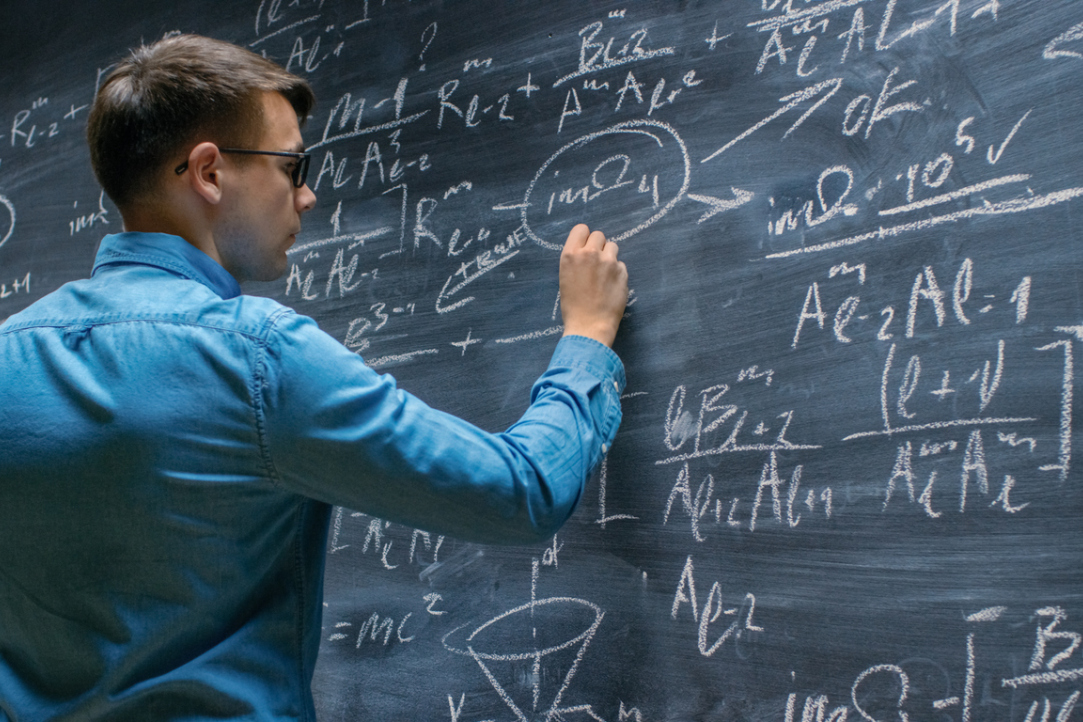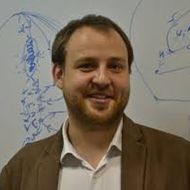Mathematicians from HSE University–Nizhny Novgorod Solve 57-Year-Old Problem

In 1968, American mathematician Paul Chernoff proposed a theorem that allows for the approximate calculation of operator semigroups, complex but useful mathematical constructions that describe how the states of multiparticle systems change over time. The method is based on a sequence of approximations—steps which make the result increasingly accurate. But until now it was unclear how quickly these steps lead to the result and what exactly influences this speed. This problem has been fully solved for the first time by mathematicians Oleg Galkin and Ivan Remizov from the Nizhny Novgorod campus of HSE University. Their work paves the way for more reliable calculations in various fields of science. The results were published in the Israel Journal of Mathematics (Q1).
Many mathematical and theoretical physics problems require precise calculations of complex specific values, such as how quickly a cup of coffee cools down, how heat spreads in an engine, or how a quantum particle behaves. Research into quantum computers and quantum information transmission channels, random processes, and many other areas important to modern science involve calculating semigroups of operators. Such calculations are based on the exponent, one of the most important mathematical functions expressed by the number e (approximately equal to 2.718) raised to a power.
However, in the case of very complex systems described by so-called unbounded operators, standard methods for calculating the exponent (semigroup of operators) stop working. In 1968, American mathematician Paul Chernoff proposed an elegant solution to this problem: a special mathematical approach now known as Chernoff approximations of semigroups of operators. This makes it possible to approximately calculate the required values of the exponent by consistently building more and more precise mathematical constructions.
Chernoff's method guaranteed that successive approximations would eventually lead to the correct answer, but did not show how quickly this would happen. Simply put, it was unclear how many steps were needed to achieve the desired accuracy. It was this uncertainty that prevented the method from being used in practice.
Mathematicians Oleg Galkin and Ivan Remizov from HSE University–Nizhny Novgorod solved this problem, which scientists around the world had struggled with for many decades. They managed to obtain general estimates of the convergence rate—that is, to describe how quickly the approximate values converge to the exact result depending on the selected parameters.

Ivan Remizov
‘This situation can be compared to a culinary recipe. Paul Chernoff indicated the necessary stages, but did not explain how exactly to select the optimal "ingredients"—auxiliary Chernoff functions that provide the best result. Therefore, it was impossible to accurately predict how quickly the “dish” would be ready. We have refined this recipe and determined which ingredients are best suited to make the method faster and more efficient,’ explains Ivan Remizov, senior researcher at the HSE International Laboratory of Dynamical Systems and Applications, senior researcher at the RAS Dobrushin Laboratory of the A.A. Kharkevich Institute for Information Transmission Problems, and co-author of the study.
Galkin and Remizov showed that Chernoff’s method can work much faster if the auxiliary Chernoff functions are chosen correctly. With the right selection of functions, the approximation becomes much more accurate even at the early stages of calculations. The mathematicians also proved a rigorous theorem: if the Chernoff function and the semigroup being approximated have the same Taylor polynomial of order k, and the Chernoff function deviates little from its Taylor polynomial, then the difference between the approximate and exact values decreases at least proportionally to 1/n^k, where n is the step number and k is any natural number reflecting the quality of the selected functions.

Oleg Galkin
Continuing the recipe analogy, the scientists have managed not only to clarify which ingredients work best, but also to accurately estimate how much faster the ‘dish’ is prepared if these optimal products are used. The formula derived by the mathematicians based on this analogy works like this: at each step of preparation, the result becomes more accurate, and the error decreases proportionally to one divided by n to the power of k, where n denotes the step number in the recipe, and k depends on the quality of the selected ingredients. The higher the value of k, the faster the desired result will be achieved.
Thus, Oleg Galkin and Ivan Remizov managed to solve a problem that had remained open for more than half a century. In addition to bringing clarity, their achievement could open up prospects and generate new problems to be solved. Although the study is theoretical in nature, its significance goes beyond pure mathematics. Such results often serve as the basis for developing new numerical methods in quantum mechanics, heat transfer, control theory, and other sciences where complex processes are modeled.
The theorem proposed by Oleg Galkin and Ivan Remizov was presented at the international scientific conference ‘Theory of Functions and Its Applications’ on July 5, 2025.
The work was supported by the HSE Fundamental Research Programme and the HSE International Laboratory of Dynamical Systems and Applications, grant No. 23-71-30008 of the Russian Science Foundation ‘Dissipative Dynamics of Infinite-Dimensional and Finite-Dimensional Systems, Development of Mathematical Models of Mechanical and Hydrodynamic Processes.’
See also:
HSE Scientists Test New Method to Investigate Mechanisms of New Word Acquisition
Researchers at the HSE Centre for Language and Brain were among the first to use transcranial alternating current stimulation to investigate whether it can influence the acquisition of new words. Although the authors of the experiment have not yet found a link between brain stimulation and word acquisition, they believe that adjusting the stimulation parameters may yield different results in the future. The study has been published in Language, Cognition and Neuroscience.
Twenty vs Ten: HSE Researcher Examines Origins of Numeral System in Lezgic Languages
It is commonly believed that the Lezgic languages spoken in Dagestan and Azerbaijan originally used a vigesimal numeral system, with the decimal system emerging later. However, a recent analysis of numerals in various dialects, conducted by linguist Maksim Melenchenko from HSE University, suggests that the opposite may be true: the decimal system was used originally, with the vigesimal system developing later. The study has been published in Folia Linguistica.
HSE University–St Petersburg and Universiti Teknologi Malaysia Release First Book of Mirror Laboratory
Malaysia hosted the AHIBS 'Weaving Horizons for Sustainable Impact' international conference, which featured the presentation of the first Russian–Malaysian book of research articles.
HSE University Students and Postgraduates Take Part in Peking University International Summer School
In July 2025, Peking University hosted its annual Quantum Molecular Dynamics Summer School, which has moved onto an international stage. Its first foreign guests were students and postgraduates from the HSE Tikhonov Moscow Institute of Electronics and Mathematics (MIEM). They took part in an extensive academic programme and had the opportunity to visit a laboratory that works with optoelectronic materials and energy devices.
'Today, Human Existence Without Mathematics Is Difficult; Tomorrow, It Will Be Simply Impossible'
Mathematicians around the world share a common language and continue to collaborate despite the challenges of recent years. The hub of mathematical networking has been shifting to China, where scientists from various countries meet at conferences and other academic events. Partnerships with leading Chinese universities offer promising opportunities to strengthen existing ties and forge new ones. In this interview with the HSE News Service, Valery Gritsenko, Head of the HSE International Laboratory for Mirror Symmetry and Automorphic Forms, discusses this and other topics, including what AI is and why the state should engage with mathematicians.
Scientists Rank Russian Regions by Climate Risk Levels
Researchers from HSE University and the Russian Academy of Sciences have assessed the levels of climate risks across Russian regions. Using five key climate risks—heatwaves, water stress, wildfires, extreme precipitation, and permafrost degradation—the scientists ranked the country’s regions according to their need for adaptation to climate change. Krasnoyarsk Krai, Irkutsk Region, and Sverdlovsk Region rank among the highest for four of the five climate risks considered. The study has been published in Science of the Total Environment.
Strategic Technological Projects Launched at HSE University
HSE University has launched a few strategic technological projects aimed at achieving the institution’s target development model. These projects focus on creating a portfolio of innovative products and services that fall under three key areas: socio-economic, science, and technology foresight, as well as 6G communication technologies and artificial intelligence.
HSE University Strengthens Ties with Peking University
On July 21, 2025, representatives from Peking University led by Zhang Jin, Vice President of Peking University and Chancellor of Shenzhen Graduate School, paid a visit to HSE University. The delegation included forty students, teachers, and administrators. During their visit, leaders from both universities discussed potential areas for future collaboration, and representatives from three HSE University departments held meetings with Chinese students.
HSE University Brings Together Researchers at International AI Summer Institute in Shanghai
In early July 2025, the International Summer Institute on Artificial Intelligence in Education took place in Shanghai. It was organised by the HSE Institute of Education in cooperation with East China Normal University (ECNU). More than 50 early-career researchers and keynote speakers from nine countries—ranging from Russia and China to Canada and Singapore—gathered to share the latest findings from their work and to forge new international partnerships.
'We Are Now Nearing Practical Application of a Stimulus-Free Brain-Mapping System'
Neural interfaces developed by scientists at HSE University in collaboration with clinicians make it possible to communicate with the brain and decode its signals. The use of such interfaces opens up opportunities to stimulate brain activity, restore and normalise muscle control in patients who have suffered a stroke, heart attack, or other neurological disorders, and support the rehabilitation of individuals with traumatic brain injuries or limb loss. Alexey Ossadtchi, Director of the Centre for Bioelectric Interfaces at the HSE Institute for Cognitive Neuroscience, discusses the centre and its work.


